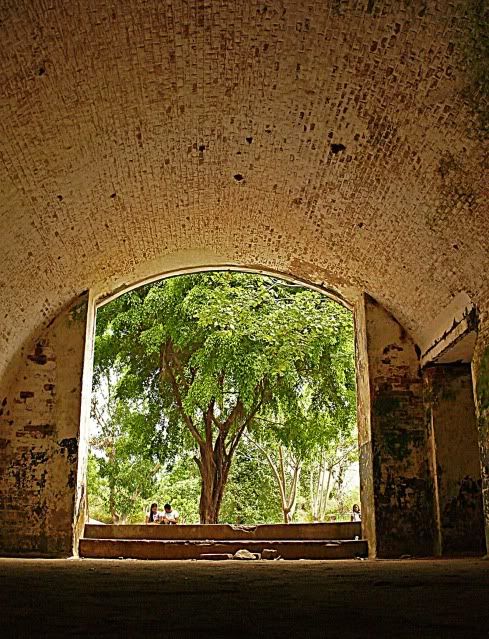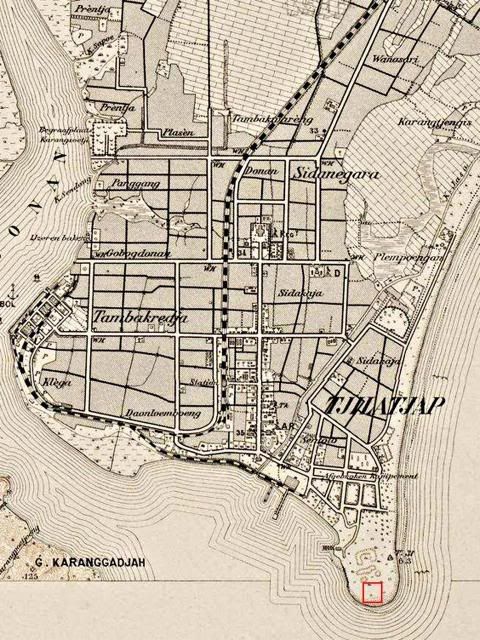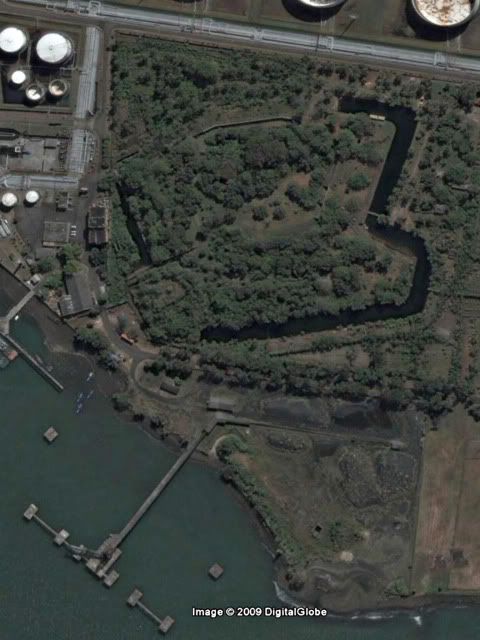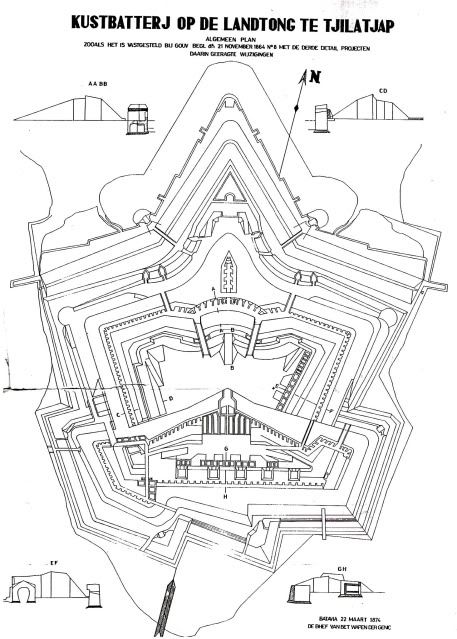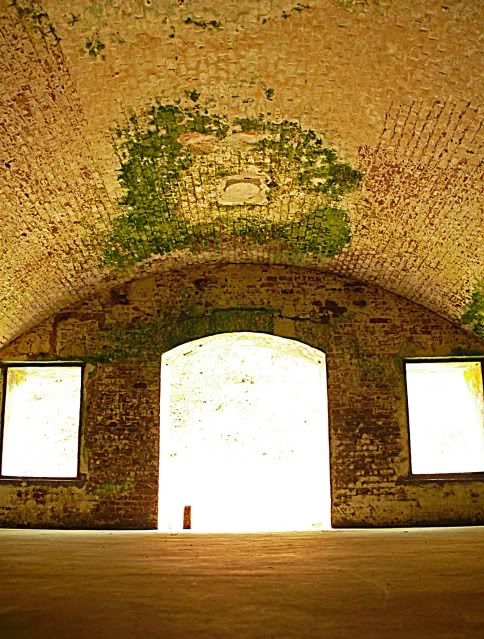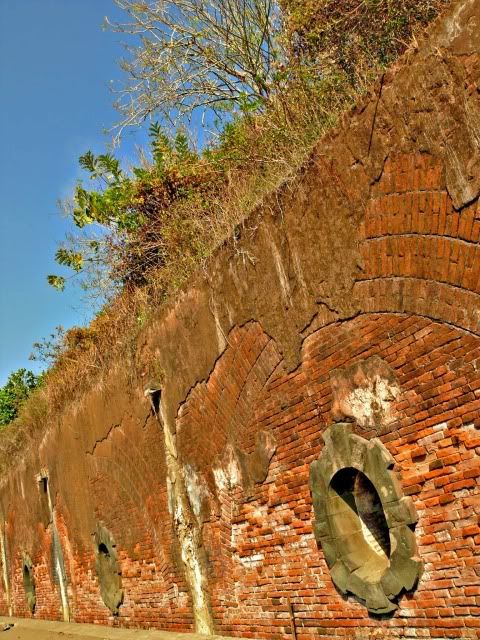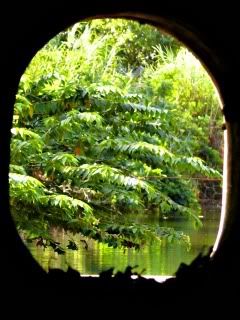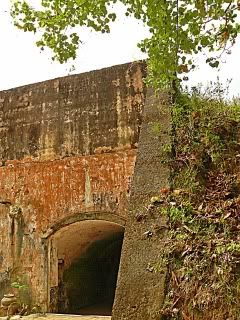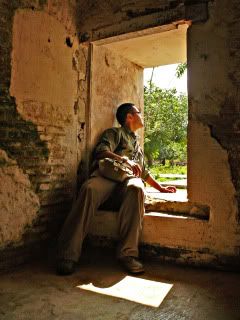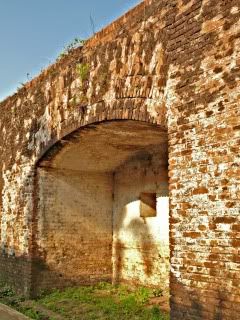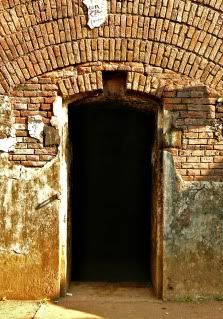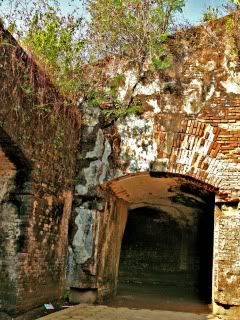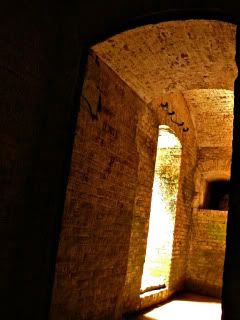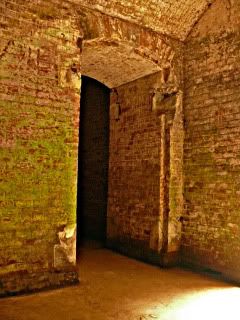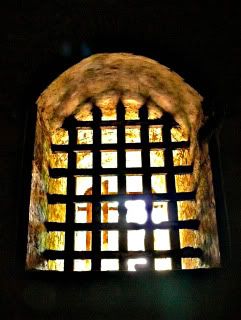
"With the other prisoners, I was transferred by train to Fort William station in Ambarawa.
This was a prison for political prisoners, similar to the Orange Hotel in Scheveningen…
… In Fort William I had woven rice bags, one per specified number of days.
If you do not succeed, you had been beaten.
On Sunday we did not work, but we had to watch a Japanese propaganda film…"
~ Witnesses Story: Chris van der Ven, Arnhem, Netherlands ~
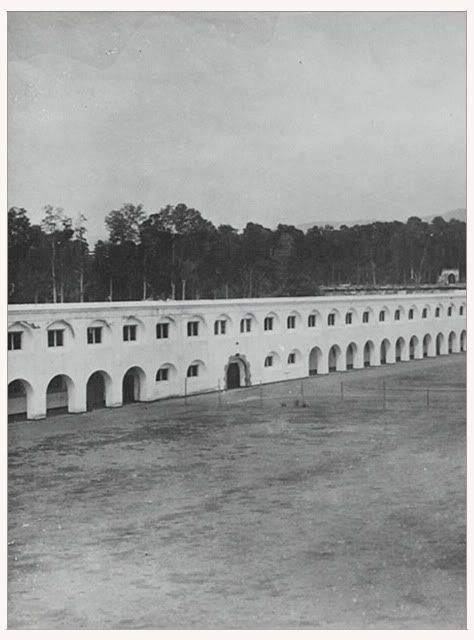
The Parade Ground and Westbank Military Barrack
Strafgevangenis [Criminal Jail] Fort Willem I – 1927
Source: KITLV

South-East Gate

Inside the Barrel Vault
[a vault having a semicircular cross section, Also called tunnel vault]
ON MISSION
Ambarawa has an altitude about 475-50 meters above the sea level. Since 1840s, it was a plantation town, because Ambarawa has excellent climate for the agricultural products especially coffee plantation [Cultuur Stelsel]. Located in Central Java about 30 km south of Samarang [North Coast] or 80 km north of Djocja [South Coast], and surrounded by mountains as well.
From the military perspective, Ambarawa was sited near the strategic axis of Samarang – Souracarta. In the mid of 18th century, the VOC established some fortifications along the route Samarang-Oenarang-Sallatiega-Souracarta. It was designed to establish the connection between the Company and the Mataram Kingdom. Therefore, many military encampments have been established in those towns.
In period Java War 1827-30, Colonel Hoorn, Military Commander in the 2nd division to the crossroads at Bawen (where the main roads of Samarang-Djocja and Samarang-Sallatiega are united), had the bamboo sheds for storing reserve forces and provided as complementary to, if he becomes available (military logistic) in Ambarawa. This point was so convenient. Post Java War period, during Koningin Willem II, a modern fort Willem I was established in 1834-53 at that former bamboo sheds of military logistic storage.
Fort William I was formerly known as a big army camp of KNIL. The camp was connected by rail to Semarang and Yogyakarta. Present day, this fort is still purposed as penitentiary building, which sited in land of Battalion Cavalry 2 – Indonesian Forces. From Ambarawa, here we took a walk to cruise inside the Fort Willem I on Sunday, 27th of September 2009.
ACKNOWLEDGEMENT

M.A. Soetikno
A Leader of “Paguyuban Peduli Cagar Budaya – Ratu Sima”
[The Community Care for Heritage]
and “Sanggar Seni Gedong Songo”
[The Art Workshop]
This journey would not be commenced without kindness of Pak Soetikno and Pak Galih from “Paguyuban Peduli Cagar Budaya – Ratu Sima” [Community Care for Heritage] in Ungaran. For that reason, I would express my appreciation for them who occasionally accompanied me cruising within the fort.
MAP OF AMBARAWA – 1922:
RAILWAY STATION AND FORT WILLEM I
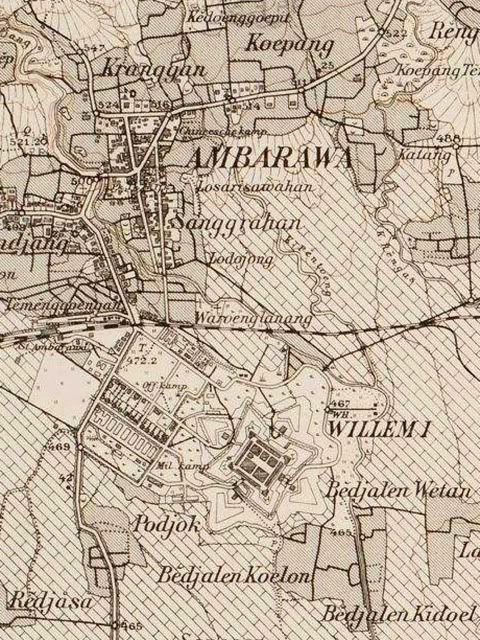
“Java. Res. Semarang – Plat XXIIh”
Herzien door Topografischen dienst in 1922
Source: Koninklijk Instituut voor de Tropen
FORT WILLEM IN THE AERIAL VIEW
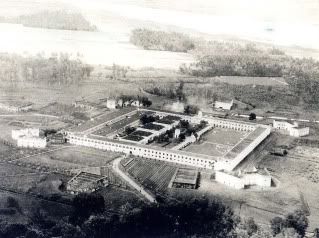
Fort Willem I – 1927
Source: KITLV

Fort Willem I - 2009
Source: Google Earth - 2009
________________________________________________________
A MEMOIR OF WILLEM I OF NETHERLANDS
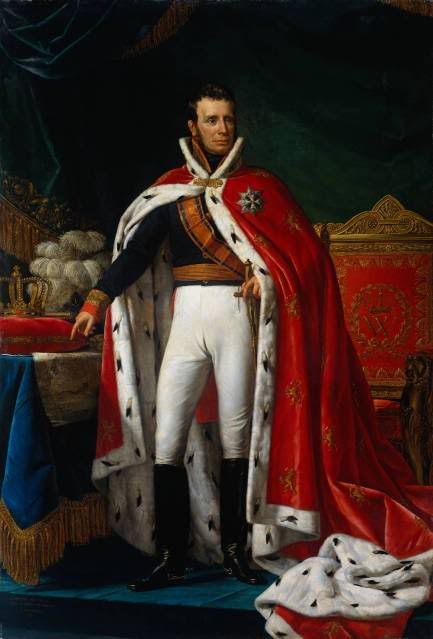
Willem I (1772-1843), Koning der Nederlanden
by J. Paelinck Peintre de S.M. La Reine des Pays Bas à Bruxelles – 1819
Source: Rijksmuseum Amsterdam
Prince of Nassau-Orange-Fulda
Reign 1803 - 1806
Prince of Orange-Nassau
Reign 1813 – 1815
King of the Netherlands
Reign 1813 (1815 as King) - 1840
Duke & Grand Duke of Luxembourg
Reign 1815 (same year elevated to Grand Duke) – 1840
_______________________________________________________
ARCHITECTURE
From the military perspective, Ambarawa was sited near the strategic axis of Samarang – Souracarta. In the mid of 18th century, the VOC established some fortifications along the route Samarang-Oenarang-Sallatiega-Souracarta. It was designed to establish the connection between the Company and the Mataram Kingdom. Therefore, many military encampments have been established in those towns.
In period Java War 1827-30, Colonel Hoorn, Military Commander in the 2nd division to the crossroads at Bawen (where the main roads of Samarang-Djocja and Samarang-Sallatiega are united), had the bamboo sheds for storing reserve forces and provided as complementary to, if he becomes available (military logistic) in Ambarawa. This point was so convenient. Post Java War period, during Koningin Willem II, a modern fort Willem I was established in 1834-53 at that former bamboo sheds of military logistic storage.
Fort William I was formerly known as a big army camp of KNIL. The camp was connected by rail to Semarang and Yogyakarta. Present day, this fort is still purposed as penitentiary building, which sited in land of Battalion Cavalry 2 – Indonesian Forces. From Ambarawa, here we took a walk to cruise inside the Fort Willem I on Sunday, 27th of September 2009.
ACKNOWLEDGEMENT

M.A. Soetikno
A Leader of “Paguyuban Peduli Cagar Budaya – Ratu Sima”
[The Community Care for Heritage]
and “Sanggar Seni Gedong Songo”
[The Art Workshop]
This journey would not be commenced without kindness of Pak Soetikno and Pak Galih from “Paguyuban Peduli Cagar Budaya – Ratu Sima” [Community Care for Heritage] in Ungaran. For that reason, I would express my appreciation for them who occasionally accompanied me cruising within the fort.
MAP OF AMBARAWA – 1922:
RAILWAY STATION AND FORT WILLEM I

“Java. Res. Semarang – Plat XXIIh”
Herzien door Topografischen dienst in 1922
Source: Koninklijk Instituut voor de Tropen
FORT WILLEM IN THE AERIAL VIEW

Fort Willem I – 1927
Source: KITLV

Fort Willem I - 2009
Source: Google Earth - 2009
________________________________________________________
A MEMOIR OF WILLEM I OF NETHERLANDS

Willem I (1772-1843), Koning der Nederlanden
by J. Paelinck Peintre de S.M. La Reine des Pays Bas à Bruxelles – 1819
Source: Rijksmuseum Amsterdam
Prince of Nassau-Orange-Fulda
Reign 1803 - 1806
Prince of Orange-Nassau
Reign 1813 – 1815
King of the Netherlands
Reign 1813 (1815 as King) - 1840
Duke & Grand Duke of Luxembourg
Reign 1815 (same year elevated to Grand Duke) – 1840
_______________________________________________________
ARCHITECTURE
~Fortification~
Fortification is a defensive military work constructed for the purpose of strengthening a position. Included here are walls built to protect a city from hostile acts. The term is derived from the Latin fortis ("strong") and facere ("to make"). Sometimes forts are supplemented with moat around it. Aside for defensive purposes, forts are often used as dwelling or the boundary of a city.
~ Fortification Design in the Post Java War Period ~
Fortification is a defensive military work constructed for the purpose of strengthening a position. Included here are walls built to protect a city from hostile acts. The term is derived from the Latin fortis ("strong") and facere ("to make"). Sometimes forts are supplemented with moat around it. Aside for defensive purposes, forts are often used as dwelling or the boundary of a city.
~ Fortification Design in the Post Java War Period ~
Since the post Java War period (the calm stage after 1830), the government of Dutch Indies established some fortifications in order to strengthening territory, especially Java. We can compare the main different in architecture between the fortification in period of the Company (17th – 18th century) and Post Java War (19th century) regarding the different utility.
The Company fortifications were designed according to the rules of military architecture for emphasizing the defense work from enemy’s military attack, whereas the 19th century fortification were designed for a defense work of the military logistic.
Concerning the defense work of military logistic, the Fort Willem I has unusual design which represents the different purpose of fortification. For examples: many windows in the rampart, the bastions are not installed in the main building (no flank, means there is no part of bastion that extends from the curtain to the face), no embrasure (no opening through which missiles may be discharged).
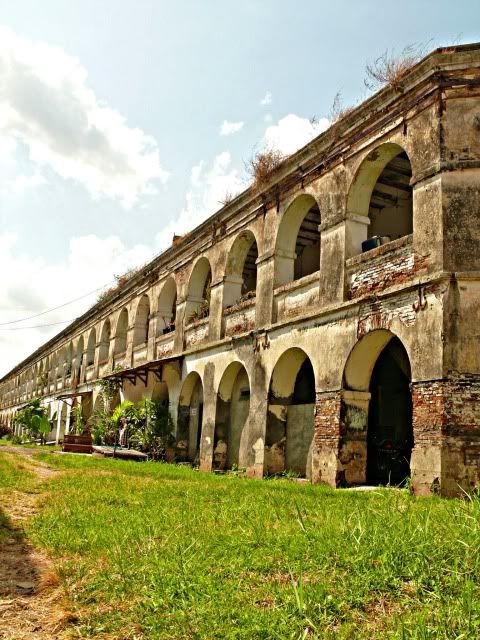
Housing for Military Garrison – East Bank

The North-East Corner
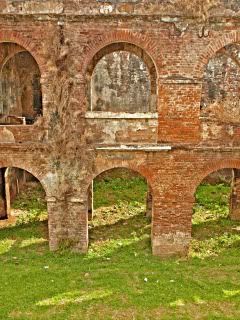
Former Military Barrack
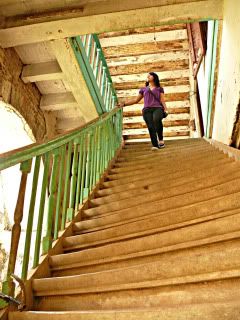
Stairway-1
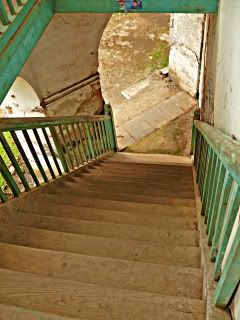
Stairway -2
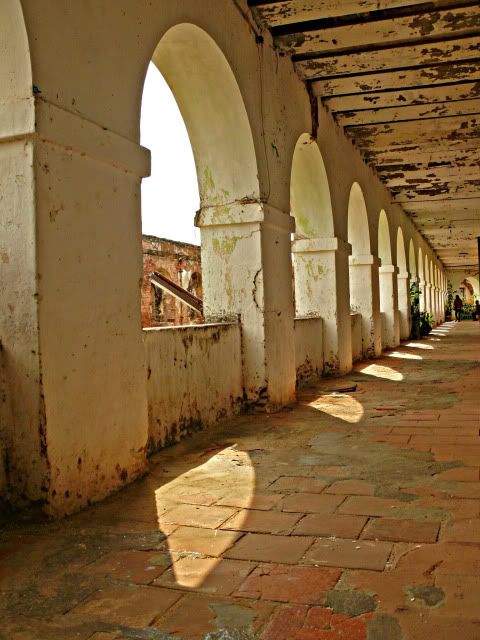
The Stretched Gallery and Terracotta Tile
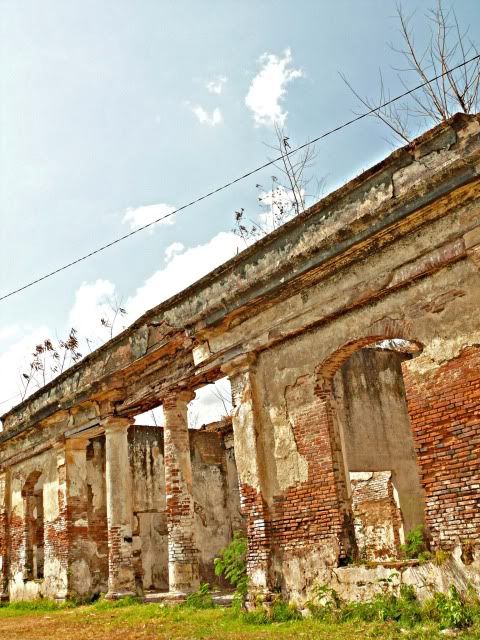
Remnants of Commander House
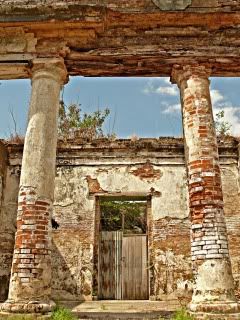
The Classical Columns
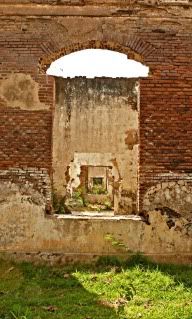
Remnants of Windows
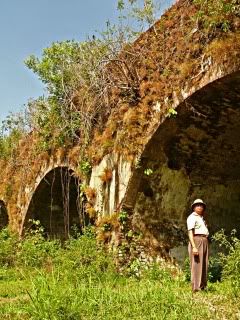
Military Building between Two Bastions
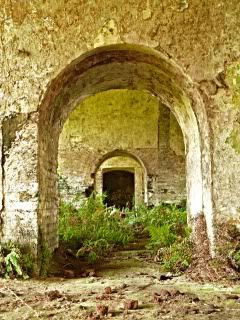
Inside Military Building between Two Bastions

Water Tower
_____________________________________________
THE CHRONICLES OF FORT WILLEM I
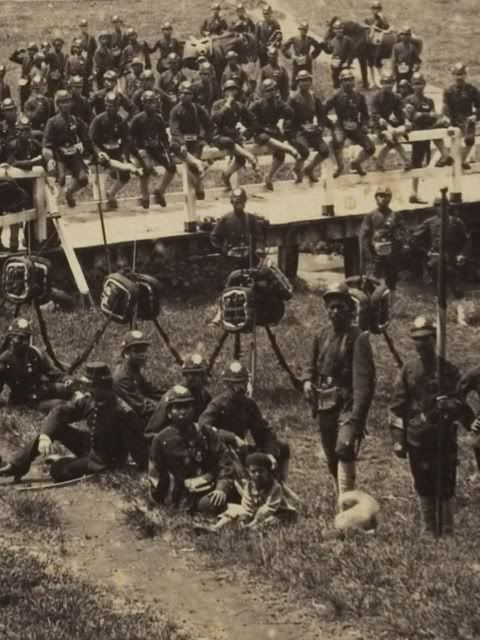
A battalion of Dutch-Indies Army in Fort William in Ambarawa – ca. 1900
Source: KITLV
1827–30
Colonel Hoorn, Military Commander in the 2nd division to the crossroads at Bawen
established the bamboo sheds for military logistic at Ambarawa.
1834–53
A modern fort Willem I was established at the former bamboo sheds for military logistic.
This Fort was purposed as Military Camp of KNIL until 1927 (?)
1865
The terrible earthquake shook the whole military camp,
some buildings in the fort itself were destroyed.
1927
Fort Willem I was adjusted from penitentiary of children prisoner for political prisoner and adult prisoner
1942–45
Japanese internment camps,
included military barrack surrounding the fort.
1945
The headquarters of the TKR
[14th of October – 23th of November 1945]
“Bersiapkampen” – Republican Camps
During the Great Awakening period 14th October – 10th of December 1945
were in the former Dutch East Indies around 3.500 Dutch civilians were interned
by Indonesian freedom fighters inside the Fort Willem I.
Camp Commandant: Sartoso
Camp Security: former prisoners, guards and pemoedas
Leadership Camp: Mr. Zeeman
1946–50

Fort Willem on 28th of July 1947
Source: Nationaal Archief – The Netherlands
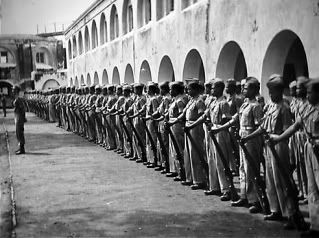
The new Police Troops are being trained police force
for the farewell parade in Fort William I.
Photo Collection Service for Military Contacts
Source: Nationaal Archief – The Netherlands

The Communists from 13 Dutch troops from Salam transferred to the Republic.
Among them were Mr. Soebardjo, Mr. Iwa Koesoema Soemantri, Dr.Tjoak Sil Ien and Ir. Tajeb.
Source: Nationaal Archief – The Netherlands
1950
The fort was purposed as adult penitentiary and military barrack
[Decree of the Minister of Justice RI No. JH6.2/23/1/RI/16]
1985
The fort was purposed as children penitentiary and military barrack
[Decree of the Minister of Justice RI No 01PR/07.031/1985]
1991
The fort was purposed as II-B penitentiary and military barrack
[Decree of the Minister of Justice RI No M.10/PR/07.03/1991]
2003 – Present day
The fort was purposed as II-A penitentiary and military barrack
[Decree of the Minister of Justice and Human Rights RI No M.16.PR-07.03.2003]
POST OFFICE AT FORT WILLEM I
Below the image of a letter that sent from Fort Willem I to a Resident in Batavia in the mid of 19th century. See the stamp, “Franco – Fort Willem I Ambarawa”.
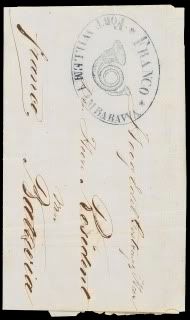
Folding letter written in the "Vesting William / Ambarawa / 14 November 1853"
to the Resident of Batavia
Courtesy of Van Dieten Postzegel Veilingen BV
Capelle aan den IJssel, The Netherlands
_____________________________________________
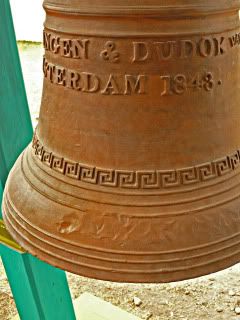
The Bell designed by by Paul van Vlissingen and Dudok van Heel – Amsterdam in 1843
It is garnished by Euro-Chinese Fret
[Fret or key pattern is a decorative design contained within a band or border, consisting of repeated, often geometric figures]
Paul van Vlissingen & Dudok van Heel :
“Koninklijke Fabriek van Stoom- en andere Werktuigen, Amsterdam”
[Royal Factory of Steam and other Tools, Amsterdam]
Paulus Cornelis van Vlissingen (1829-1906)
Directeur van de Koninklijke Fabriek Firma “Paul van Vlissingen en Dudok van Heel” 1852-1871
grootgrondbezitter in Minnesota, USA 1871-1887;
conservator van het Gemeentelijk Museum van Oudheden te Haarlem 1886-1906.
The company was founded by Paul van Vlissingen and Abraham Dudok van Heel in 1827 that supporting King William.
1826
Originally, the company was founded by Paul van Vlissingen as a place to repair steam engines on the Amsterdam Steamboat Company in Oostenburg.
1827
A former smoke house of the VOC hired to expand.
Together with Abraham Dudok van Heel was now a "Factory of Steam and Other Tools”
developed under the name Van Vlissingen & Dudok van Heel.
1850s
The factory was the one of the greatest engineering in the Netherlands.
1913
Moved to the manufacture of railway carriages and steel structures for the industrial.
1929
The telegraphic address “Werkspoor” was the official name of the company.
____________________________________________
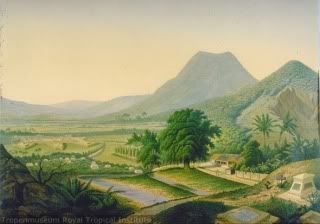
The Dutch Cemetery and Fort Willem I
[end of 19th century lithograph]
Source: Tropenmuseum

The Bastion and Mountainous Landscape of Ambarawa
REFERENCES
“Werkspoor“
http://nl.wikipedia.org/wiki/Werkspoor
“A Visual Dictionary of Architecture”
by Francis D.K. Ching
Published by Van Nostrand Reinhold.
“Terminologie Verdedigingswerken”
Stichting Menno van Coehoorn – Januari 2004
”Het Indisch budget van oorlog”
digitale bibliotheek voor de Nederlandse letteren
Stichting dbnl Leiden
http://www.dbnl.org/tekst/_gid001186801_01/_gid001186801_01_0061.htm
Bersiapkampen: Fort Willem I
http://www.bersiapkampen.nl/Fort%20Willem%20I.htm
Voor dertien jongens betekende 'mati' echt 'dood'
Getuigenverhaal: Chris van der Ven, Arnhem – Gelderland
Nationaal Comité 4 en 5 mei – Amsterdam
http://www.4en5mei.nl
The Company fortifications were designed according to the rules of military architecture for emphasizing the defense work from enemy’s military attack, whereas the 19th century fortification were designed for a defense work of the military logistic.
Concerning the defense work of military logistic, the Fort Willem I has unusual design which represents the different purpose of fortification. For examples: many windows in the rampart, the bastions are not installed in the main building (no flank, means there is no part of bastion that extends from the curtain to the face), no embrasure (no opening through which missiles may be discharged).

Housing for Military Garrison – East Bank

The North-East Corner

Former Military Barrack

Stairway-1

Stairway -2

The Stretched Gallery and Terracotta Tile

Remnants of Commander House

The Classical Columns

Remnants of Windows

Military Building between Two Bastions

Inside Military Building between Two Bastions

Water Tower
_____________________________________________
THE CHRONICLES OF FORT WILLEM I

A battalion of Dutch-Indies Army in Fort William in Ambarawa – ca. 1900
Source: KITLV
1827–30
Colonel Hoorn, Military Commander in the 2nd division to the crossroads at Bawen
established the bamboo sheds for military logistic at Ambarawa.
1834–53
A modern fort Willem I was established at the former bamboo sheds for military logistic.
This Fort was purposed as Military Camp of KNIL until 1927 (?)
1865
The terrible earthquake shook the whole military camp,
some buildings in the fort itself were destroyed.
1927
Fort Willem I was adjusted from penitentiary of children prisoner for political prisoner and adult prisoner
1942–45
Japanese internment camps,
included military barrack surrounding the fort.
1945
The headquarters of the TKR
[14th of October – 23th of November 1945]
“Bersiapkampen” – Republican Camps
During the Great Awakening period 14th October – 10th of December 1945
were in the former Dutch East Indies around 3.500 Dutch civilians were interned
by Indonesian freedom fighters inside the Fort Willem I.
Camp Commandant: Sartoso
Camp Security: former prisoners, guards and pemoedas
Leadership Camp: Mr. Zeeman
1946–50

Fort Willem on 28th of July 1947
Source: Nationaal Archief – The Netherlands

The new Police Troops are being trained police force
for the farewell parade in Fort William I.
Photo Collection Service for Military Contacts
Source: Nationaal Archief – The Netherlands

The Communists from 13 Dutch troops from Salam transferred to the Republic.
Among them were Mr. Soebardjo, Mr. Iwa Koesoema Soemantri, Dr.Tjoak Sil Ien and Ir. Tajeb.
Source: Nationaal Archief – The Netherlands
1950
The fort was purposed as adult penitentiary and military barrack
[Decree of the Minister of Justice RI No. JH6.2/23/1/RI/16]
1985
The fort was purposed as children penitentiary and military barrack
[Decree of the Minister of Justice RI No 01PR/07.031/1985]
1991
The fort was purposed as II-B penitentiary and military barrack
[Decree of the Minister of Justice RI No M.10/PR/07.03/1991]
2003 – Present day
The fort was purposed as II-A penitentiary and military barrack
[Decree of the Minister of Justice and Human Rights RI No M.16.PR-07.03.2003]
POST OFFICE AT FORT WILLEM I
Below the image of a letter that sent from Fort Willem I to a Resident in Batavia in the mid of 19th century. See the stamp, “Franco – Fort Willem I Ambarawa”.

Folding letter written in the "Vesting William / Ambarawa / 14 November 1853"
to the Resident of Batavia
Courtesy of Van Dieten Postzegel Veilingen BV
Capelle aan den IJssel, The Netherlands
_____________________________________________

The Bell designed by by Paul van Vlissingen and Dudok van Heel – Amsterdam in 1843
It is garnished by Euro-Chinese Fret
[Fret or key pattern is a decorative design contained within a band or border, consisting of repeated, often geometric figures]
Paul van Vlissingen & Dudok van Heel :
“Koninklijke Fabriek van Stoom- en andere Werktuigen, Amsterdam”
[Royal Factory of Steam and other Tools, Amsterdam]
Paulus Cornelis van Vlissingen (1829-1906)
Directeur van de Koninklijke Fabriek Firma “Paul van Vlissingen en Dudok van Heel” 1852-1871
grootgrondbezitter in Minnesota, USA 1871-1887;
conservator van het Gemeentelijk Museum van Oudheden te Haarlem 1886-1906.
The company was founded by Paul van Vlissingen and Abraham Dudok van Heel in 1827 that supporting King William.
1826
Originally, the company was founded by Paul van Vlissingen as a place to repair steam engines on the Amsterdam Steamboat Company in Oostenburg.
1827
A former smoke house of the VOC hired to expand.
Together with Abraham Dudok van Heel was now a "Factory of Steam and Other Tools”
developed under the name Van Vlissingen & Dudok van Heel.
1850s
The factory was the one of the greatest engineering in the Netherlands.
1913
Moved to the manufacture of railway carriages and steel structures for the industrial.
1929
The telegraphic address “Werkspoor” was the official name of the company.
____________________________________________

The Dutch Cemetery and Fort Willem I
[end of 19th century lithograph]
Source: Tropenmuseum

The Bastion and Mountainous Landscape of Ambarawa
REFERENCES
“Werkspoor“
http://nl.wikipedia.org/wiki/Werkspoor
“A Visual Dictionary of Architecture”
by Francis D.K. Ching
Published by Van Nostrand Reinhold.
“Terminologie Verdedigingswerken”
Stichting Menno van Coehoorn – Januari 2004
”Het Indisch budget van oorlog”
digitale bibliotheek voor de Nederlandse letteren
Stichting dbnl Leiden
http://www.dbnl.org/tekst/_gid001186801_01/_gid001186801_01_0061.htm
Bersiapkampen: Fort Willem I
http://www.bersiapkampen.nl/Fort%20Willem%20I.htm
Voor dertien jongens betekende 'mati' echt 'dood'
Getuigenverhaal: Chris van der Ven, Arnhem – Gelderland
Nationaal Comité 4 en 5 mei – Amsterdam
http://www.4en5mei.nl

